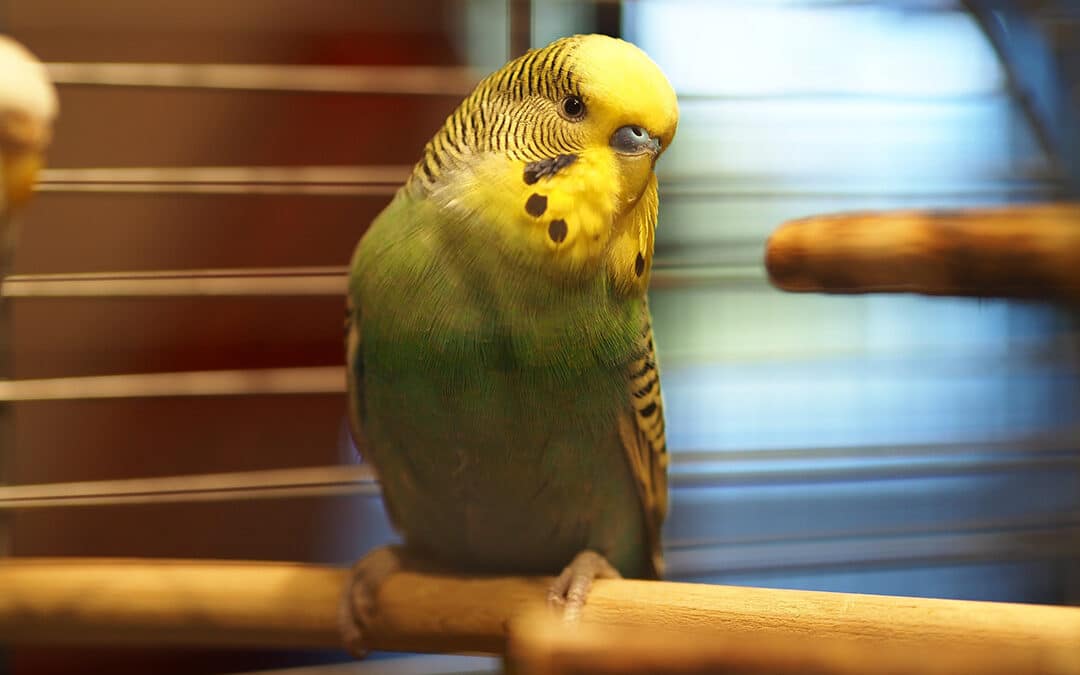Budgies are known for their cheerful chirping and playful personalities. These colorful birds are known for their ability to form close bonds with their owners and can make excellent pets for people who provide them with the proper care and attention they need.
In order to better understand your pet budgie and build a strong bond with them, it’s important to learn about their unique form of communication.
The Importance of Chirping
Not all chirps are the same, and each type of chirp can convey a different meaning. It’s important to pay attention to the context in which your budgie is chirping, as well as the tone and volume of the chirp, in order to understand what your pet is trying to communicate.
Here are some common chirp types and their meanings:
- Contentment Chirp: A soft, high-pitched chirp that indicates that your budgie is happy and relaxed. This chirp is often accompanied by a contented body posture, such as fluffed feathers and a relaxed stance.
- Excitement Chirp: A series of rapid, joyful chirps that indicate excitement. Your budgie may chirp like this when they see you or receive a new toy or treat.
- Alarm Chirp: A loud, rapid chirp that signals that your budgie is afraid or alarmed. This chirp may be accompanied by other behaviors, such as fluffed feathers or rapid movements, and is an indicator that your budgie needs your attention and support.
- Bonding Chirp: A soft, repetitive chirp that indicates that your budgie is trying to bond with you or another bird. This type of chirping is often accompanied by friendly behaviors, such as preening or snuggling.
- Mating Chirp: A long, melodic chirp that is often made by male budgies during breeding season. This chirp is used to attract a mate and signal availability for breeding.
It can take time and observation to learn to differentiate between these different vocalizations and understand what they mean, but the effort is well worth it in order to build a stronger bond with your pet.
Responding to Chirping
Once you understand the different chirp types, it’s important to know how to respond appropriately to your budgie’s vocalizations. By doing so, you can strengthen your bond with your pet and help them feel safe and secure.
Here are some tips for responding to your budgie’s chirping:
- Contentment Chirp: When your budgie is making a contentment chirp, simply enjoy the moment and bask in the happiness they’re expressing. You can also talk to them softly or offer a gentle head scratch to reinforce the bond.
- Excitement Chirp: When your budgie is excited, join in on the fun! Play with them, offer a new toy, or give them a special treat. Just make sure to keep their excitement level in check, as too much stimulation can be overwhelming for some birds.
- Alarm Chirp: If your budgie is making an alarm chirp, it’s important to take action quickly to help them feel safe. Remove any potential threats, such as loud noises or unfamiliar animals, and offer your pet comfort by talking to them softly and offering a secure perch or hiding spot.
- Bonding Chirp: When your budgie is trying to bond with you, respond by spending quality time with them. Offer them a gentle head scratch, talk to them, or play with them. You can also try offering them a treat or toy to reinforce the bond.
- Mating Chirp: If your budgie is making a mating chirp, it’s important to understand that this behavior is normal and part of their breeding cycle. If you’re not interested in breeding your pet, simply ignore the chirping or provide them with a toy or treat to redirect their attention.
It’s important to keep in mind that each budgie is unique and may have their own individual preferences for how they like to be responded to.
By paying attention to your pet’s body language and vocalizations, you can learn what works best for them and help them feel safe, happy, and loved.
By responding appropriately to your budgie’s chirping, you can strengthen your bond with your pet and help them feel more comfortable and secure. So next time your budgie starts to chirp, take a moment to listen and respond in a way that best supports their needs and emotions.
Conclusion
In conclusion, understanding the different chirp types of your budgie is an important aspect of building a strong and healthy relationship with your pet.
By paying attention to the context, tone, and volume of your budgie’s chirps, you can gain insight into their emotions and needs, and respond appropriately to support their well-being.
Remember that each budgie is unique and may have their own individual vocalizations and behaviors, so it’s important to observe your pet closely and get to know their individual personality and communication style.
With patience and observation, you can develop a deep understanding of your budgie’s vocalizations and strengthen your bond with your pet.
So, the next time your budgie starts to chirp, take a moment to listen and understand what they’re trying to communicate. You may be surprised by what you learn about your pet, and the joy and love that can be found in the simple act of listening to their chirps.




